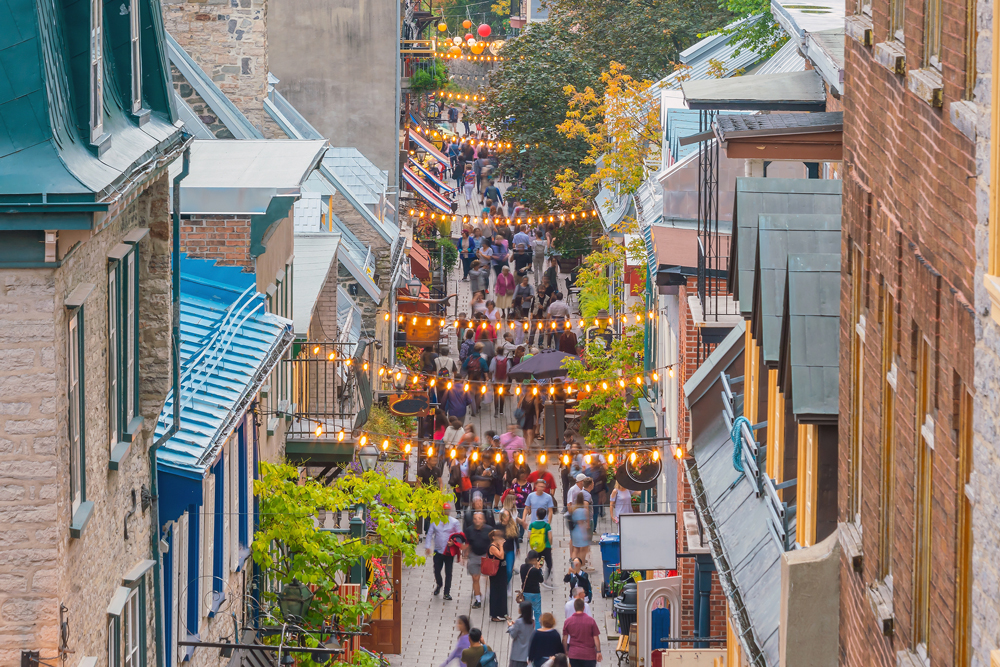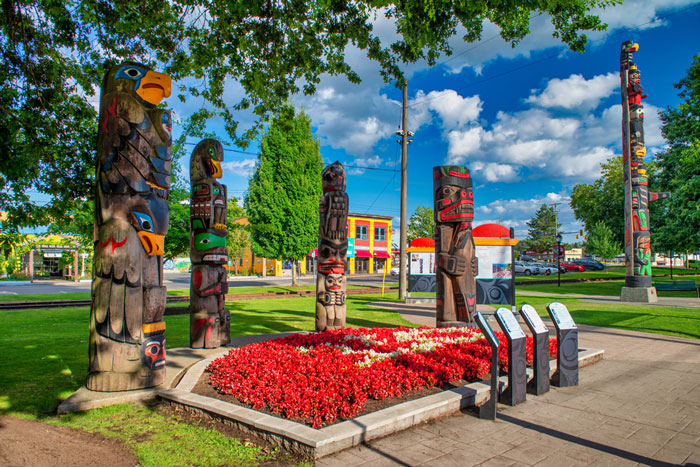What Sustainable Tourism Really Means: It’s More Than “Going Green”
Sustainable tourism is more than just a buzzword. What was once a nice-to-have is now an industry-wide priority. According to a 2023 Skift study, 66% of travellers recognize the importance of sustainability, with nearly half of survey respondents stating they actively search for sustainable options.
But it extends beyond “going green.” It’s a balance between exploration and conservation, economic growth and environmental stewardship.
The notion that sustainability is JUST about the environment is misplaced. It [sustainability] means all members of the community, along with the values they hold, are respected and upheld.
Ted Robinson, Business Events Specialist, Tourism Kingston
Understanding what sustainable tourism really means is vital to the longevity of your destination and its communities. Here’s what you need to know, from defining what it is and redefining metrics of success to the role of destinations and travellers and implementation strategies.

What is sustainable tourism?
Sustainable tourism is a symbiotic relationship between travellers, destinations, and local communities.
In essence, it’s about minimizing negative impacts while creating positive outcomes for the people, the place, and the planet. It requires long-term vision and includes four key components:
- Environmental sustainability;
- economic viability;
- social equity; and
- cultural preservation.
Environmental sustainability
Environmental sustainability focuses on minimizing the impact of travel activities—it’s the big picture, safeguarding your destination (and the planet) for future generations. This includes reducing carbon emissions and protecting natural habitat, offering eco-friendly accommodations and transportation options, and promoting responsible business operations with partners.
Economic viability
Sustainable tourism is also about helping local economies thrive without compromising natural and cultural assets. This means creating opportunities for local businesses and community members to reap the rewards of tourism and reinvesting profits into your destination.
Social equity
Diversity, equality, and inclusion (DEI) are integral to sustainable tourism. Meaning the benefits are shared equitably among all members of your destination, from empowering marginalized communities and Indigenous residents to promoting fair labour practises throughout the tourism supply chain.
Cultural preservation
Culture is a fundamental pillar of sustainable tourism. It means celebrating and preserving the heritage of the place and its people. This involves respecting local traditions, fostering meaningful interactions between travellers and host communities, and encouraging respect and appreciation among visitors and locals.

How do you build a sustainable destination?
A good starting point is community engagement and empowerment—including local communities in tourism decision-making processes so their voices are heard and their needs are prioritized. When residents and local community groups participate in tourism planning and development, you create ownership and pride, leading to a more inclusive and resilient tourism economy.
Next, look at ways to preserve cultural heritage and promote cultural diversity. Celebrate the unique traditions, languages, and customs of the various communities within your destination. Sustainable tourism means embracing cultural authenticity and creating ethical tourism practices. This not only enriches the visitor experience but it shows a commitment to the people who make up the place, which improves resident sentiment overall.
Speaking of resident sentiment, overtourism is a growing concern in many destinations, with the negative impact on natural resources and the quality of life of locals being the main focal points. So, be proactive about destination stewardship and develop strategies around resource management, visitor management, and infrastructure development.
Social media and modern tourism go hand-in-hand. Learn how to curate a sustainable selfie-made tourism destination.
Of course, implementation and adoption of sustainable tourism requires buy-in from travellers, industry stakeholders, and residents. That begins with awareness and education. Consider things like outreach campaigns, community-based programs, and workshops to help visitors understand the impact they have on your destination and how sustainability initiatives benefit everybody.
Why balance economic growth with conservation?
When economic growth is prioritized in tourism, it leads to negative environmental and socio-cultural outcomes. Striking a balance between growth and conservation is at the heart of sustainable tourism, and doing so requires partnerships among stakeholders.
Collaboration: that’s the key. Take Indigenous experiences, for example. Sunrise When the Salmon Come (Cheryl Chapman) works with Indigenous Tourism BC as its Indigenous Tourism Specialist for the Cariboo Chilcotin Coast tourism region. She believes Indigenous tourism experiences unite economic growth and conservation.
In an episode of Travel Beyond, Cheryl spoke about the importance of working with Indigenous communities to help guide sustainable tourism in your destination. By working with economic development, Indigenous Tourism BC delivers meaningful interactions with visitors, deepening engagement beyond standard tourism experiences.
How can you support Indigenous tourism in Canada? Three tourism stakeholders weigh in.
Another element of sustainable economic development is diversification. Not relying on mass tourism by promoting niche markets, like ecotourism, cultural tourism, and community-based tourism. It also means investing in sustainable infrastructure, implementing responsible tourism practices, and fostering public-private partnerships.
Investing in sustainable tourism infrastructure
Sustainable tourism infrastructure is essential to helping travellers minimize their carbon footprint. Supporting responsible tourism practices includes:
- investing in eco-friendly accommodations;
- installing renewable energy systems where applicable; and
- providing alternative transportation options (i.e. electric vehicle charging stations and bike-friendly routes throughout your destination).
Implementing responsible tourism practices
Responsible tourism practices relate to overtourism and resident sentiment. This includes promoting responsible visitor behaviour, enforcing capacity limits in sensitive areas, and implementing sustainable tourism certifications and standards. An example of certifications and standards is the GreenSteps initiative, which our clients Tourism Kingston and RTO 9 both adhere to.

Fostering public-private partnerships
Partnerships between public and private sectors in your destination complements sustainable tourism, as they strengthen resources. The aim is to foster collaboration among government agencies, destination marketing organizations (DMOs), local businesses, and community groups. This makes it more feasible to develop tourism programs and products that balance economic growth with conservation objectives.
How do you measure success beyond green metrics?
Carbon footprint reduction and energy efficiency are important indicators of success. But since sustainable tourism is more than “going green,” you need more holistic metrics to measure. Here are six areas to evaluate:
- Social impact
- Heritage preservation
- Community engagement
- Visitor experience
- Economic resilience
- Stakeholder collaboration
Social impact assessment
Assess how tourism affects the people who live in your destination. Look at things like whether tourism creates jobs for residents, whether everyone gets a fair share of the revenue, and how tourism affects local culture.
Cultural heritage preservation
To determine this metric of success, ask yourself, are we protecting our destination’s historical sites? Are we preserving traditions and upholding cultural values? Are we supporting local artists and craftspeople?
Community engagement and empowerment
Successful sustainable tourism means residents are involved and their opinions are considered. Identifiers include entrepreneurs launching tourism businesses and locals joining programs to learn more about tourism or participating in groups that make decisions about tourism.
Visitor experience and satisfaction
Ultimately, the success of sustainable tourism hinges on visitor experience. Surveys and reviews are ways to gauge visitor satisfaction relating to destination authenticity, hospitality quality, cultural immersion, and sustainability practices.
Economic resilience and diversification
Tourism is only one contributor to the economy. So it’s important to look at your destination as a whole. Is your destination getting stronger overall, from accommodations to restaurants? Are profits being generated across all sectors and not just one? If your peak tourism season suffers, will the shoulder season keep you afloat?
Want to bolster shoulder season tourism? Learn the heads and tails of shoulder season tourism in destination marketing.
Stakeholder collaboration and partnerships
Successful destination development relies on collaboration and partnerships—more so when it comes to sustainability. This is easily measured by identifying whether or not stakeholders are working together and pulling toward the same goals. Or if resources are being shared to launch new tourism products and initiatives.

What role do visitors play in sustainable tourism?
Sustainable tourism isn’t just the responsibility of DMOs, tourism businesses, and the destinations. Travellers also play an important role. Being a responsible traveller means understanding the impact our actions have.
- It’s about respecting local cultures, supporting local businesses over Big Box alternatives, and doing our part to protect local communities and wildlife.
- It’s about choosing eco-friendly travel methods and advocating for better tourism practices.
- It’s about encouraging companies and governments to do their part in making travel more sustainable.
That said, while the demand for sustainable tourism is growing, there’s a gap between saying and doing. Meaning barriers such as higher costs and lesser conveniences are preventing some travellers from choosing a more sustainable tourism destination.
Research suggests 90% of travellers are keen to visit destinations promoting sustainability. But 70% are feeling overwhelmed by what it takes to be a sustainable tourist.
What’s the solution? Transparency and guidance. Make it easy for travellers to learn about your destination’s sustainability efforts online; provide them with itineraries and packages to make sustainable travel easier and more convenient; and offer incentives and promotions to encourage responsible behaviour.
Ready to make your destination more sustainable?
Developing a sustainable tourism destination is a massive undertaking. It goes well beyond green initiatives, requires a variety of resources, and demands collaboration at all levels.
If you’re feeling overwhelmed, the Tourism Industry Association of Canada launched a program in 2023 to help define your path. Check out the program to learn more.
Need help promoting your destination as a sustainable tourism option? With more than 20 years’ experience in place branding, marketing, and strategy, we’re here to lend a helping hand. Contact Alphabet® to get started.